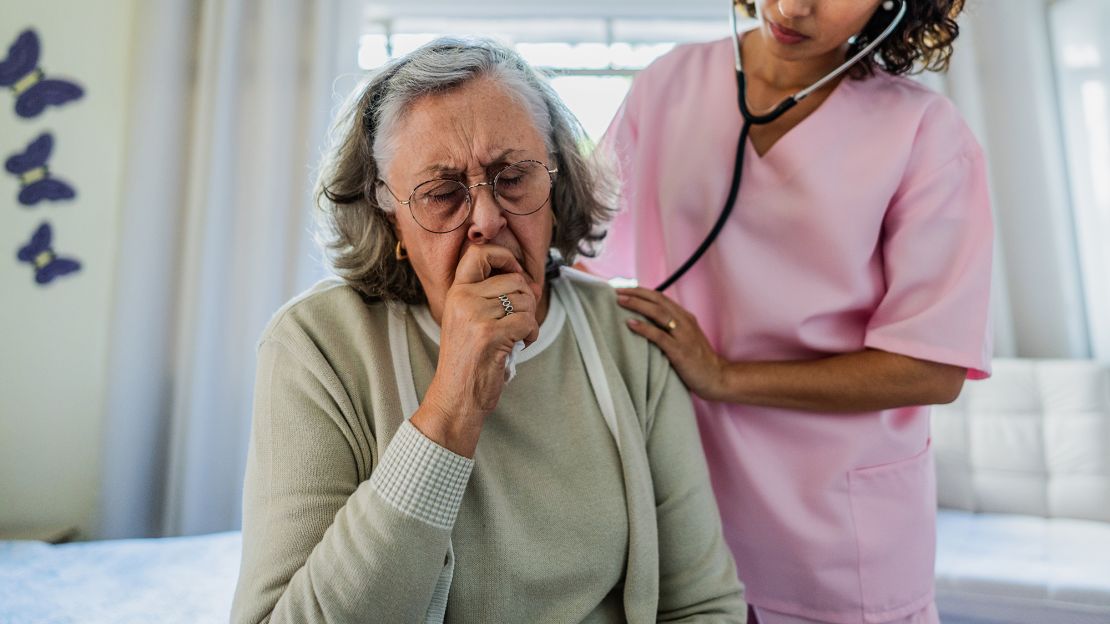Earlier in the week, the Vatican had said the 88-year-old had a “polymicrobial infection of the respiratory tract.”
These are the latest in a series of lung-related health concerns that have plagued Francis, and it’s a reminder for older adults to take respiratory infections seriously — even if you’re not as old as the pontiff.
I asked CNN wellness expert Dr. Leana Wen about the different types of respiratory infections. How are they diagnosed and treated? Why are older adults especially at risk for serious disease due to respiratory infections? And how can everyone reduce their chance of contracting pneumonia and other respiratory infections?
Wen is an emergency physician and clinical associate professor at George Washington University. She previously was Baltimore’s health commissioner.
CNN: What are the different types of common respiratory infections, and what are their symptoms?
Dr. Leana Wen: One way to think about respiratory infections is where they affect the respiratory tract. Upper respiratory tract infections affect the sinuses and throat and include infections like the common cold and a sinus infection.
Lower respiratory tract infections affect the airways and lungs. They include bronchitis, which is an inflammation of the airway passages leading to the lungs. People with acute bronchitis may cough a lot but generally do not have fever or struggle with breathing; if they do, the concern would be that they also have another condition.
Pneumonia is also a lower respiratory tract infection and is an infection of the lungs themselves. There are a variety of organisms that can cause pneumonia, including viruses, bacteria, fungi and parasites. Individuals with pneumonia can experience a range of symptoms — the common ones being fever, shortness of breath, cough, body aches and fatigue. Some patients may also experience nausea, vomiting, diarrhea, chest pain while breathing, and altered mental status or confusion.

CNN: What does it mean that Pope Francis has a “polymicrobial infection of the respiratory tract”?
Wen: The word polymicrobial means that more than one organism is involved in his illness. So, more than one type of virus, bacteria, fungus or parasite was detected and believed to be the cause of his symptoms.
Since Pope Francis remains hospitalized and his infection is described as complex, it’s not a surprise that he was diagnosed with pneumonia. In 2023, he required hospitalization for pneumonia, too. He is also known to have had severe pneumonia in the past and to have had a portion of a lung removed.
CNN: How are lower respiratory tract infections like pneumonia diagnosed and treated?
Wen: Diagnosis is made through a combination of the person’s medical history, physical exam and diagnostic tests. The tests could include a chest X-ray or CT scan. They could also include viral swabs through the nose and pharynx and sputum culture in which material is coughed up and tested. Sometimes, patients undergo a bronchoscopy, in which a flexible tube goes into the airways to take samples for testing. Patients who require hospitalization will also receive blood tests, including to assess whether the infection has spread through their bloodstream.
The treatment depends on the type of organism involved. Common causes of bacterial pneumonia include Mycoplasma pneumoniae and Streptococcus pneumoniae. These would be treated with antibiotics. Someone with a fungal pneumonia would receive antifungal treatment. Many viruses can also lead to pneumonia, including Covid-19, influenza, human metapneumovirus, or HMPV, and the respiratory syncytial virus, or RSV. Some of these viruses have specific antivirals that can be given.
CNN: Why are respiratory infections especially concerning in older adults?
Wen: There is no question that respiratory infections present a serious threat to older adults. According to a 2020 study, nearly 1 million older adults are hospitalized for pneumonia every year. Over one-third of those hospitalized die within the next year, that study found.
There are several reasons why older adults are more vulnerable to severe outcomes from these infections. First, they are more likely to have other chronic medical conditions that increase the likelihood of complication, such as chronic obstructive pulmonary disease, emphysema, heart disease, kidney disease and diabetes. Second, they are more likely to have muscle weakness, which makes coughing a challenge. Third, the muscle weakness could lead to swallowing problems. Older individuals are more likely to inhale food or liquid into their lungs, causing aspiration pneumonia.
Fourth, the immune system weakens with age, which means that older individuals would have diminished ability to fight infections. Fifth, some older people may have atypical symptoms — for example, instead of having a high fever and cough, they have worsening confusion or diarrhea. This could lead to a delay in diagnosis until the infection is more severe.
It’s important to add that older adults are not the only group for whom respiratory infections can be especially severe. Infants and young children are also very susceptible; globally, pneumonia kills more children under the age of 5 than any other infectious disease. Other vulnerable groups include people who are immunocompromised or who have other serious underlying medical conditions.

CNN: What kinds of complications can occur in people with respiratory tract infections?
Wen: People may experience such difficulty breathing that they need additional respiratory support, including intubation where a machine helps to breathe for the patient and the person has to be under heavy sedation. Bacteria pneumonia can spread to the bloodstream and cause sepsis, which is extremely dangerous and can be quickly fatal. And pockets of pus can form inside or around the lungs, and they may need to be drained with surgery.
CNN: Are there steps people can take to reduce their risk of contracting respiratory infections?
Wen: People should receive the vaccines available to them. For instance, everyone 6 months and older should receive the flu shot every year. Children under 5 and adults 50 years and older should receive the pneumococcal vaccine. And people eligible for the RSV vaccine should receive it as well. The CDC recommends it for all adults 75 and older as well as adults ages 60 to 74 who are at increased risk for severe RSV.
Those who smoke or drink alcohol heavily should know that these are risk factors for pneumonia and work to quit smoking and reduce alcohol intake. Eating a healthy diet, exercising regularly, and getting adequate sleep can help strengthen immune response. And people should optimize control of their other underlying medical conditions.
Good hand hygiene can reduce the transmission of contagious diseases. Everyone should wash their hands with soap and water, including after touching high-use public spaces.
Those who want to be extra cautious should consider taking additional precautions, including masking in indoor crowded spaces, being sure that those they associate with do not have respiratory symptoms, and reducing time around others during peak respiratory infection season.
Get inspired by a weekly roundup on living well, made simple. Sign up for CNN’s Life, But Better newsletter for information and tools designed to improve your well-being.














